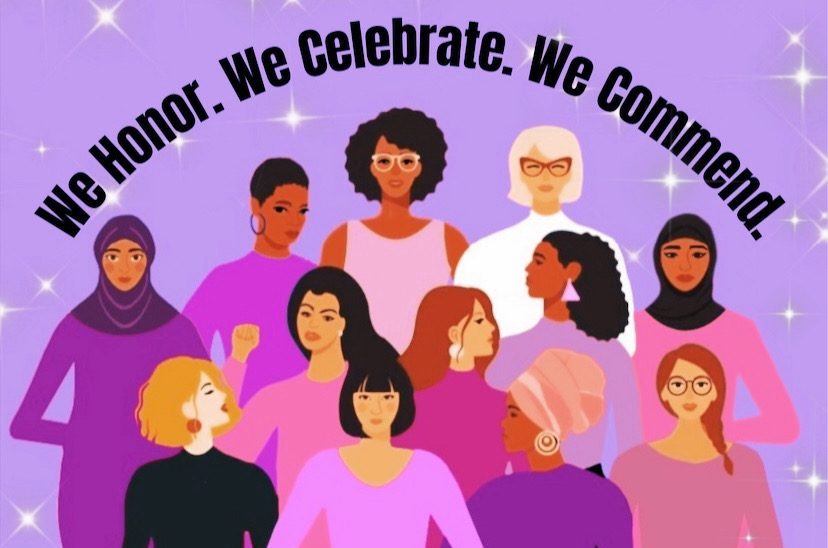Breaking the Glass Ceiling: Women’s History Month
March 26, 2021
In honor of Women’s History Month in the month of March, Eastside presents a celebration of female representation in various aspects of our daily lives. In honor of this month, we encourage women to “break through the glass ceiling” and achieve the highly-elevated success that may seem unattainable in a discriminatory environment. This includes not only women working hard for their success, but also allowing that success to be more accessible to them by battling the constant barrier of male privilege.
Overall, we celebrate Women’s History Month in order to honor, commend, and celebrate the accomplishments, strides and breakthroughs that women have achieved in the fight for gender equality.
A historical struggle for gender equality
Women have faced numerous obstacles and gender barriers throughout history, and there is still an ongoing struggle for gender equality today. There are numerous significant historical events where communities have come together to advocate for equal opportunity in the workplace, the political and business arena, the arts industry, the sports world, and even in the traditional household.
On July 19-20, 1848, the Seneca Falls Convention, the first women’s right convention, took place in New York with Elizabeth Cady Stanton as one of the organizers. The attendants signed the Declaration of Sentiments, which outlined rights that women must be entitled to as American citizens and spoke out against the oppression that women face. This notable convention aided in propelling the women’s rights movement in the United States.
In 1869, prominent figures in the wake of the women’s rights movement, like Susan B. Anthony and Elizabeth Cady Stanton founded the National Woman Suffrage Association to fight for the women’s rights to vote. Even though Anthony and Stanton initiated this association in 1869, it took until August 18, 1920, for the 19th Amendment to the U.S. Constitution to be ratified. In honor of Susan B. Anthony’s contribution to the movement, including her persistent activism, it is also called the “Susan B. Anthony Amendment.”
On December 1, 1955, Rosa Parks participated in civil disobedience when she refused to give up her seat on the bus to a white man in Montgomery, Alabama, playing a vital role in launching the civil rights movement. Parks was a freedom fighter, a courageous woman of who inspire others to resist oppression and discrimination
In the 1960s and ‘70s, there was significant legislation passed in order to prevent gender-based discrimination. For example, the Equal Pay Act of 1963, prohibiting wage discrimination between men and women who work at the same job and workplace and the Civil Rights Act of 1964 banned the employment discrimination on the basis of race, religion, national origin or sex. Even though these were landmark legislations, wage discrimination for women as well as microaggressions in the workplace continue to this day. Also, President Richard Nixon signs the Title IX Education Amendments into law on June 23, 1972, prohibiting the gender discrimination under any education program or activity receiving Federal financial assistance.

On July 7, 1981, Sandra Day O’Connor became the first woman to serve on the U.S Supreme Court. She then went on to serve for 24 years and retire in 2006. Also, President Bill Clinton notably signs the Violence Against Women Act 13 years later in 1994. This provided funds for programs that aid in sexual assault, domestic violence, and other gender-related violence.
In the 21st century, women made even more progress for equal rights, breaking barriers by acquiring leadership in male-dominated fields. In 2007, Nancy Pelosi became the first female speaker of the U.S. House and she then reclaimed the title again in 2019. Also, as of March 18, 2018, Marcy Kaptur, Congresswoman serving the 9th district of Ohio, became the longest-serving women in the U.S. House of Representatives. Then, on July 26, 2019, Hilary Clinton became the first woman to be nominated for president of the United States. Also, on January 20, 2021, Kamala Harris became the first woman and woman of color to be the vice president of the United States.
Women have significant contributions throughout history in the battle against gender-based discrimination, but this struggle is not over as this sexism continues until today. As we honor and celebrate these courageous women throughout history, we must take their stories and allow it to inspire us to continue fighting for equal pay, equal treatment, and equal rights overall.
Hidden female figures in history
Interview with Ms. Mikulski on Women’s History
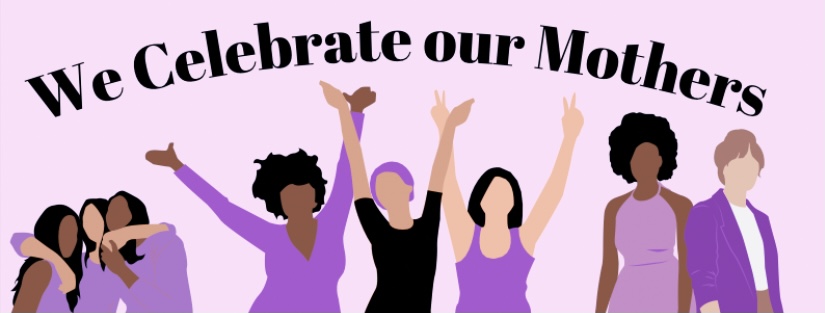
For many of us, our mothers are our main source of inspiration
We celebrate our mothers
Ziva Davis(’22) – Eastside News Editor
My Mother Inspires Me:

My mom is the most influential woman in my life. She is my role model who I aspire to be like. She has a great sense of humor and can always make me laugh, even on my worst day. She teaches me to spend life doing the things that make me happy. My mom is the most selfless person that I know and she always puts her family before herself. I feel so grateful to have a person in my life who understands me better than anyone else.
One of the main reasons why we have a solidified relationship is because I can speak to her about anything and I know that she will not judge me. Also, she is a great listener. If I ever need to vent, I can always go to her and I know that she will understand how I am feeling and give me advice.
My mom is the most determined and hardworking person that I know. She manages to juggle many tasks on her plate, all with grace and a positive attitude.
I love spending time with her. Even if we are just giving my dog a bath, we always manage to laugh and enjoy each other’s company. She radiates positivity and love wherever she goes, and I try to follow in her footsteps every day.
Avi Shohat(’23) – Eastside Features Editor
My Mother Inspires Me:
I would like to begin this story by mentioning how difficult it is to convey just how much my mother inspires me and how the significance of her presence cannot be substituted nor replaced by any individual who tries to suit that role.
There is something so beautiful about perceiving the growth my mother has undertaken on her own—taking risks to become independent, confident from within, and to be held accountable for someone other than herself. The level to which she is willing to put others before herself is noteworthy. I only recently realized how exhausting it must be for her to awaken before sunrise, attend to work obligations, only to return home at sundown and complete household chores. Now, when I recognize how essential she is to my life and to the lives of those around her, my attempts not to take her efforts for granted, while demonstrating my gratitude for her, has become more prominent in my life. Only through the reinforcement of my mother could I reach my greatest potential, become successful in respect to good health, happiness, and the endless opportunities I will receive to pursue my dreams and make them my reality. She brought me into this world after all, and she knows that it is her responsibility to take care of the entire family just as much as the family must take care of her. We are equally dependent, my mother and I. How could she take care of me if I did not take care of her? I feel that the older I grow and the more I understand my mother’s personality, achievements, and obstacles, the more I learn about both the challenges and the essentiality of the perseverance of being a foreigner and a woman. In doing so, I have an increasing awareness of the woman that I aspire to be.

Furthermore, my mother’s childhood was not the most favorable, but she continued to walk her path because she knew in her heart that the more steps she would take, the closer she would get to no longer chasing her dreams but, rather, attaining them. She proceeds to remind my brother and me of how fortunate we are to be able to sustain our lives, as during her youth it was a luxury to purchase something as simple as a bottle of soda. Hence, she uses her experiences to teach my brother and me how to remain modest, and appreciative, all the while acknowledging the difference between what we “need” and what we “desire.” However, as mindful as she is of managing the money she is rewarded with for her strong efforts at work, she also knows that sometimes to acquire the thing one desires is by purchasing the things they need. She reminds me, consistently, that life is all about the small, memorable moments, and that I do not need to fulfill all of my wishes in one day. She has goals, she reaches them, and if she does not, she is flexible and is not discouraged nor disappointed in herself because life is all about setting goals, overcoming the obstacles in realizing those goals, accomplishing them, and setting new ones. Her passion, determination, and commitment will not go unnoticed. From inside jokes, to her and I both making mistakes in one another’s native languages, to petty arguments over insignificant things, to the disheartening times, she is always there and those are the memories that I will hold onto.
Moreover, my mother reinforces to my brother and me that there will always be people in one’s life who they might compare themselves to or that those people will only have an interest in lowering one’s self-esteem, so that it is noteworthy to remain true to one’s self and be confident, from both within and out, in who that person is. I do not take this lightly, because I understand that everyone feels they have their flaws and that there are people other than oneself who will highlight those characteristics even if they are not “flaws.” When the day comes to an end, nevertheless, every individual will only learn to genuinely love themselves when loving all the traits they possess—imperfections and all. My mother taught me that, and she did so by every little complaint she has about the “gray hair” or “wrinkle” that I could never see even if I used a magnifying glass. All I can see is how beautiful she is with or without makeup, her sense of humor, her vibrant personality, and her dedication to helping those around her thrive just as much, if not more than herself. That is the beauty I see when I think about my mother and the woman I aspire to be. That is the woman in my life who inspires me most and makes me realize how honorable it is for someone to tell me that I look identical to her. She is a legacy, and now I can be her’s.
I encourage anyone and everyone to take a moment to reflect on the woman in their life that matters to them most. Think about how much your life would change if they were not present in your life. Tell them how much they mean to you, even if they roll their eyes and say “Who knew you as the sentimental type?” or as my mother always says, “What do you want?” It will make you laugh and it will also frustrate you because you wish you could tell them just how much you love them. For Women’s History Month, in particular, let us remember the women who have changed society and the world for the better, improving life for people across the globe for generations to come. Most eminently, remember the woman in your life that inspires you most to be the best version of yourself, a version of yourself that makes both you and those around you feel content, and a version of yourself that can continue to change the world for the better.
Women in Sports: Gender discrimination in the sports world

Think of the greatest athlete of all time. While people might say LeBron James, Tom Brady, or some other male athlete, millions of girls around the world would immediately name a female athlete. There are so many positive female athletes breaking barriers in the sports world: Serena Williams, Allyson Felix, Megan Rapinoe, and too many more to count.
The sad fact is that a majority of women are put down for being an athlete, regardless if you play at the recreational level or professional level. Hateful people will always find a way to comment and say something emulating the statement, “Women can’t play real sports,” or “Women sports are so incredibly boring.”
Why these people feel the need to put other people, including professionals, down is beyond me.
Not only this, but the people who are laying out these untrue comments are the people who could never play as well as a girl. Professional male athletes, for example Steph Curry, Dwyane Wade, and Chris Bosh are among the many allies who try to bring awareness to women’s rights and women’s sports.
People who actually love the sport will support it no matter what.
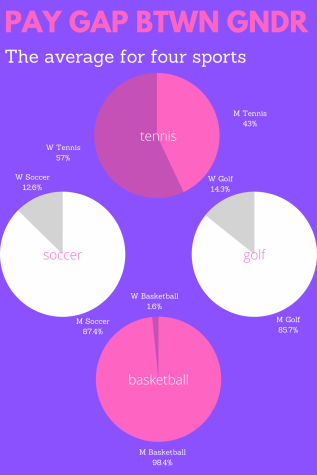
While socially, there is so much activism that people could participate in to bring awareness to the importance of women in sports, there is also a system set in place at numerous organizations which prioritize men’s sports over women’s sports.
Most infamously, the US Soccer organization did not equally pay their men and women soccer teams, giving the former a higher paycheck per player. The women filed a lawsuit against the organization for violating the Equal Pay Act, in which the principle is “Equal Pay for equal work.” The pursuit to gain equal pay is still underway for the USWNT.
Additionally, another barrier preventing women’s sports from being seen as equal to men is the amount of sponsorships each gets from outside organizations. Men’s sports are being publicized, sponsored, and advertised left and right. It is the fact that women must create their own accounts to finally be appreciated: ESPNW, Just Women Sports, and Women’s Sports Foundation.
Hopefully, one day, women will not face so many obstacles and discouragement in the sports world. Athletes, no matter what age or size, deserve to have a female role model breaking barriers in the sports world.
What does it mean to be a female athlete?
Lizzy Sommeling:

Whether you’re talking about male or female sports, no one captures the essence of ‘team’ better than Abby Wambach, the US Women’s Soccer Team’s all-time scoring leader, who said “…winning any individual award is a total product of the team that you play for. I’ve never scored a goal in my life without getting a pass from someone else.” In 2011, she became the first ever soccer player of either gender to be named Athlete of the Year by the Associated Press. To me, Abby’s commitment and work ethic, combined with her unselfish approach to the game, is a good example for anyone looking to improve their game and excel in team sports. In fact, Abby’s idea/phrase could be used to express the importance of teamwork in any field… It’s like the old adage, “there is no ‘I’ in team.”
Caroline Perry:

“The success of every woman should be the inspiration to another”- Serena Williams. As a female athlete my coaches and family were not my only inspiration, other women athletes contributed to my desire to play. They taught me to set goals, even if they felt impossible to accomplish. Even if it meant I would have to use all of my willpower to reach my goals. My advice for other female athletes is to believe in yourselves even when you are doubted. Set goals and be determined to achieve them. Those who doubt will only motivate your craving for success and your confidence to believe in yourself.
Vinnie Lin:
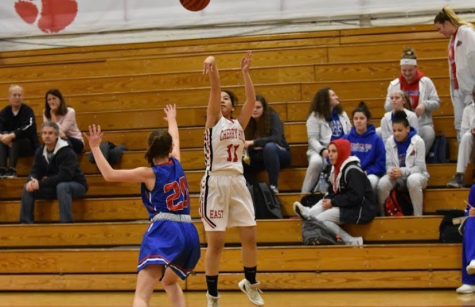
As a female athlete, I think women play an important role in sports today. Their dedication and passion for their sport inspires younger girls to work hard to become better athletes and follow in their path. Not only do they positively impact younger girls, but female athletes are also breaking boundaries on a larger scale by bringing light to gender equality in sports. My advice for other female athletes is to keep working hard and pushing yourselves to new levels to achieve your goals in the sport you play. Be confident and don’t underestimate yourselves because just like Simone Biles said, “We can push ourselves further. We always have more to give.”
Annie Behm:
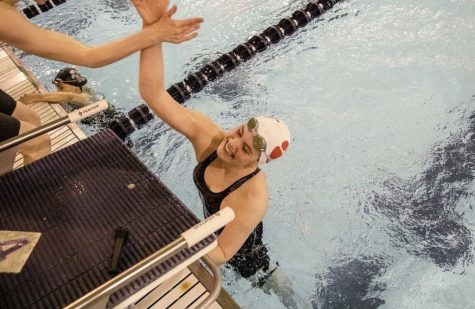
“You never know how strong you are until being strong is the only choice you have”- Missy Franklin. As a female athlete, I think one of the most inspiring things to see is other women paving the way for everyone behind them. Equal recognition is so important for every female in sport, because it opens the door to opportunities for others to chase the same success. Because of the celebrated success of Olympic level swimmers like Missy Franklin, I never had doubts that similar feats were possible for me. My advice for other female athletes is to never put a limit on your potential. It’s often so easy to have confidence in others, but if you place that same confidence in yourself, more doors will open up for you. Once you achieve something, it’s important to celebrate your accomplishments, but there are always greater things out there. If you are confident in yourself, it makes the pursuit of your goals more straightforward and obtainable.
Sarah Teng:

Katie Ledecky once said “before you can achieve you must believe… in yourself.” As a female athlete, I’ve encountered the feelings of doubt and insecurity numerous times. However, throughout my journey, I’ve learned that the key to success is confidence. Confidence is not just in your training, but more importantly in yourself. My advice to other female athletes is to believe in yourself, even when nobody else does. Your mind is your biggest component, the only thing that stands between you and success. Even when it seems impossible to reach a certain goal, keep pushing yourself, keep believing in yourself, and keep believing in your potential.
Elliana Tonghini :

Being a female athlete is something that is so important to me that at times, it
is hard to put into words. So many people doubt the true capabilities of a woman and put limits on what women should be able to achieve but in reality, all humans have the same potential as one another. “She believed she could, so she did”(R.S. Grey) is a very well-known quote by a woman, and I don’t think it could be any more true. Women put in the work to transcend the doubts of others, and surpass the standards set. Female athletes become role models for one another, whether it be a world-renowned soccer player or simply another teammate on your softball team.

Women bring each other up to be better each and every day, and I truly believe that is the epitome of being a female athlete. My advice to other female athletes is to not be afraid to fail. Failure is simply a stepping stone to success and once you are able to develop that mindset, an internal confidence will grow that will not only apply to the sports you are playing, but to every aspect of your life. Keep at it, always believe, and never ever give up.
Haley Krassan :

I believe that participating in sports has without question been one of the most important things I have done in high school. Being a part of the field hockey and lacrosse teams has been so important for me to be able to make new friends with not only girls in my grade but also upperclassmen who have helped me all throughout high school. In addition to forming new friendships, playing sports has taught me how to manage my time. After getting home late from games I still have to eat, shower, do homework, and spend time with my family all early enough for me to get a good night’s sleep and work hard again the next day. Long practices have taught me how rewarding it feels to play well in a game and feel myself improving. While sometimes being a student athlete is not always the easiest task, it is the most rewarding and I am extremely thankful for the opportunity to get to play the sports that I love.
Women in Science: Breaking Gender Barriers
For much of history, the fields of science, technology, engineering, and mathematics (commonly known as STEM), as well as medicine have been mainly dominated by men. For centuries, many people believed that there was no place for a woman in science, but today, much of these prejudices have faded and the worlds of STEM and medicine have changed for the better. This progress would not have been possible without the efforts and achievements of many trailblazing female scientists, doctors, mathematicians, engineers, chemists, physicists, and more. These courageous women shattered the glass ceiling: they fought, sometimes they failed, but nevertheless, they persisted.
Some of the most notable early women in science are Ada Lovelace, the world’s first computer programmer, Elizabeth Blackwell, the first woman to earn a medical degree in the United States, and Emily Roebling, the female engineer behind the Brooklyn Bridge, one of the greatest, most difficult engineering projects in history. Each was a woman of firsts, and broke down walls that had long barred women from joining the fields of STEM and medicine, which at the time (the 19th century), were seen as “a man’s world”. Yet even so, the fight for gender equality for women in science was still far from over.
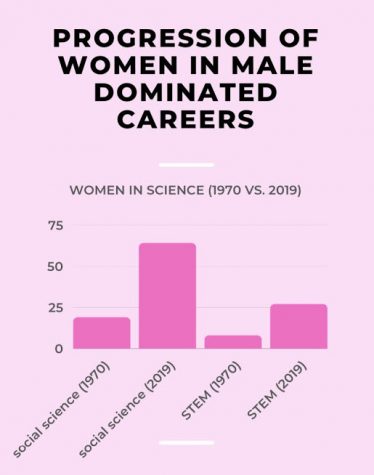
As Marie Curie, one of history’s most influential scientists, once said, “I was taught that the way of progress was neither swift nor easy.” Curie’s own experiences as a female physicist and chemist are a testament to this, because throughout her life, she faced many barriers because of her gender. Curie was unable to attend universities in Warsaw, was refused from jobs as a scientist in Poland, and was even almost excluded from being recognized with a Nobel prize, all because she was a woman. Nevertheless, she persevered, and not only did Curie become the first woman to win a Nobel prize, but she is also the first person (man or woman) to win two Nobel prizes, and the only person to win Nobel prizes in two different categories (physics and chemistry). Curie’s work revolutionized the world’s understanding of radioactivity and paved the way for huge advancements in medicine, in physics, in nuclear science, and more.

Although Curie’s work was eventually recognized in her lifetime, and rightfully so, most female scientists of her time weren’t given the same acknowledgment. For a long time, women fought to earn a place in science, often struggling just to get a seat in a laboratory, only to be overlooked for their contributions. Even today, there still are countless under-celebrated women in science who have not yet received the recognition and appreciation that they deserve. A remarkable “hidden figure” in STEM was mathematician Katherine Johnson, whose mathematical calculations and research played a critical role in many of NASA’s projects, including John Glenn’s famous orbital mission. In fact, Johnson was so well respected at NASA that Glenn himself actually asked if Johnson could manually double check his mission’s flight calculations, which had originally been done on computers. However, despite her success and talent, as an African American woman in the mid-twentieth century, Johnson regularly faced racial and gender discrimination. She and her fellow African American colleagues had to use segregated bathrooms and lunchrooms, and for a long time, Johnson was not allowed to put her name on any papers she wrote or helped write, which meant she often did not get credit for her research. Johnson’s work was finally celebrated in the hit 2016 film, Hidden Figures, a biographical film centered around the incredible stories of Johnson, NASA mathematician Dorothy Vaughan, and NASA aerospace engineer Mary Jackson.
Today, inspirational female scientists continue to play pivotal roles in STEM and medicine. As the Covid-19 pandemic raged on, one prominent female scientist at the forefront of Covid-19 vaccine research was Ozlem Tureci, the chief medical officer and cofounder of BioNTech. Dr. Tureci played a big part in developing the Pfizer-BioNTech Covid-19 vaccine, the first authorized Covid-19 vaccine in the United States and a crucial turning point in the Covid-19 pandemic. Additionally, the world has come a long way in terms of recognizing and celebrating women in science and their work. The 2020 Nobel Prizes honored not one, but three women for their groundbreaking scientific contributions. Last October, Andrea Ghez won the Nobel prize in physics, the fourth woman ever to do so, and Emmanuelle Charpentier and Jennifer A. Doudna were awarded the Nobel prize in chemistry, marking the first time two women have shared this award.
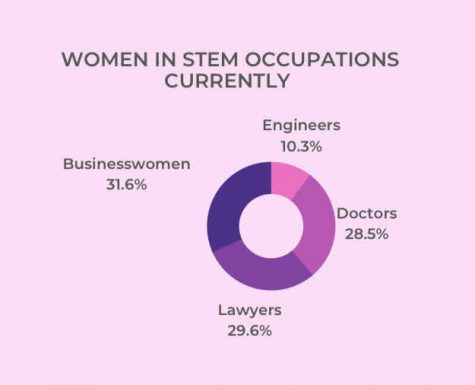
Without a doubt, the landscape of the STEM and medicine fields has progressed significantly through the years. Just thirty years ago, in 1970, women made up only 8% of the workforce in science-related fields, according to the United States Census Bureau. 49 years and a multitude scientific advancements later, in 2019, the percentage of women in the STEM workforce had grown to 27%. In 2019, women made up nearly half of all occupations in math (47%) and in life and physical sciences (45%). The representation of women in social science occupations has also significantly increased, rising from 19% in 1970 to 64% in 2019. Furthermore, according to the United Nations, today, women make up 70% of healthcare workers, globally.
These increases, without a doubt, represent significant milestones for women in medicine and STEM, but there is still work to be done. Although women do make up the majority of social science workers, social science only accounts for 3% of STEM occupations. Computer science and engineering make up 80% of the STEM workforce, but in 2019, women only made up about 25% of computer workers and 15% of engineers. The percentage of women in engineering has increased since 1970, from 3% to 15%, but the percentage of women in computer science (although an overall increase from 1970), has actually decreased from 1990 to 2019. Women are still an underrepresented minority in these fields, and stereotypes, wage disparity, and bias against women still exist. However, we have the power to continue to break down gender barriers in science. In fact, if you simply look around Cherry Hill East, you can find so many young girls who hope to pursue a career in STEM or medicine, as doctors, engineers, computer scientists, biologists, mathematicians, and more.
It was much in part to these pioneering women in science that East students, as well as girls around the world, can even begin to dream of a career in science. These pioneers, and multitudes of other influential women in science such as Rosalind Franklin, Chien-Shiung Wu, Jane Goodall, Sally Ride, Rachel Carson, Amelia Earhart, and Gladys West, as well as countless impactful hidden figures who continue to be left out of history books, have not only contributed invaluable advancements to the fields of STEM and medicine, but also continue to inspire generations of young people.
Katherine Johnson once said, “We will always have STEM with us. Some things will drop out of the public eye and will go away, but there will always be science, engineering, and technology. And there will always, always be mathematics.” And as long as we have STEM and medicine, the world will need persevering women to play a part in them.
STEM field: Interview with Shir Goldfinger (’19)
Women as Leaders: To lead is to inspire
Spotlight: First Korean-American woman to be mayor of Cherry Hill, NJ
When you think of leaders, who comes to mind? You probably think of people like the President, or those in positions of power in the business atmosphere or the political atmosphere. Really, there are positions of leadership in every walk of life, but even in just those few examples, there is an apparent imbalance. There has never been one female President in the United States. When you think of those who run businesses, you most likely think of a man in a suit, giving his employees directives. Only recently have women started to make progress in taking leadership positions.
Women like Kamala Harris who made history in being elected as the first female and female of color as Vice President are making strides for women across the country and globe. Here in Cherry Hill, Mayor Shin Angulo is similarly, making strides of her own.
Mayor Shin Angulo is the first Korean-American woman to serve as mayor in Cherry Hill, and not only that, she is the first Korean-American woman to serve as mayor in all of New Jersey. When speaking to Mayor Shin Angulo, she said that “it is truly an honor and a privilege to be the first.”
However, being a mayor is not all that she has accomplished in her line of work. She is also the first Asian American woman to be elected as a county freeholder in New Jersey. In addition to that, she also served on the Cherry Hill Township council, making her the first Korean-American woman to hold an elected office in New Jersey. Consequently, Mayor Shin Angulo is no stranger to being the first.
Mayor Shin Angulo goes on to say “I am heartened by the fact that the vast majority of the people I have worked with in Cherry Hill especially and throughout Camden County take this issue as seriously as I do and they work hard to make sure that women are not just given a seat at the table, but they are heard and respected the same as their male counterparts.”
Mayor Shin Angulo, in this respect, has had positive experiences in her political arena, but other women are not as fortunate. According to Time Magazine, a report showed that 93% of respondents felt that females in leadership positions experienced unwanted physical contact and 94% stated that women do not get the same treatment in comparison to their male equivalent.
This all being said, women are breaking barriers in political arenas, as Kamala Harris and our very own Mayor Shin Angulo demonstrate. The women’s suffrage movement started the path towards women representation, and females continue to make strides and will continue to do so to make their voices heard. Women’s History Month is celebrated to acknowledge all women and their accomplishments. Take this time to acknowledge, appreciate and love the women in your life. However, this is also the time to encourage them to be a leader in their chosen profession!
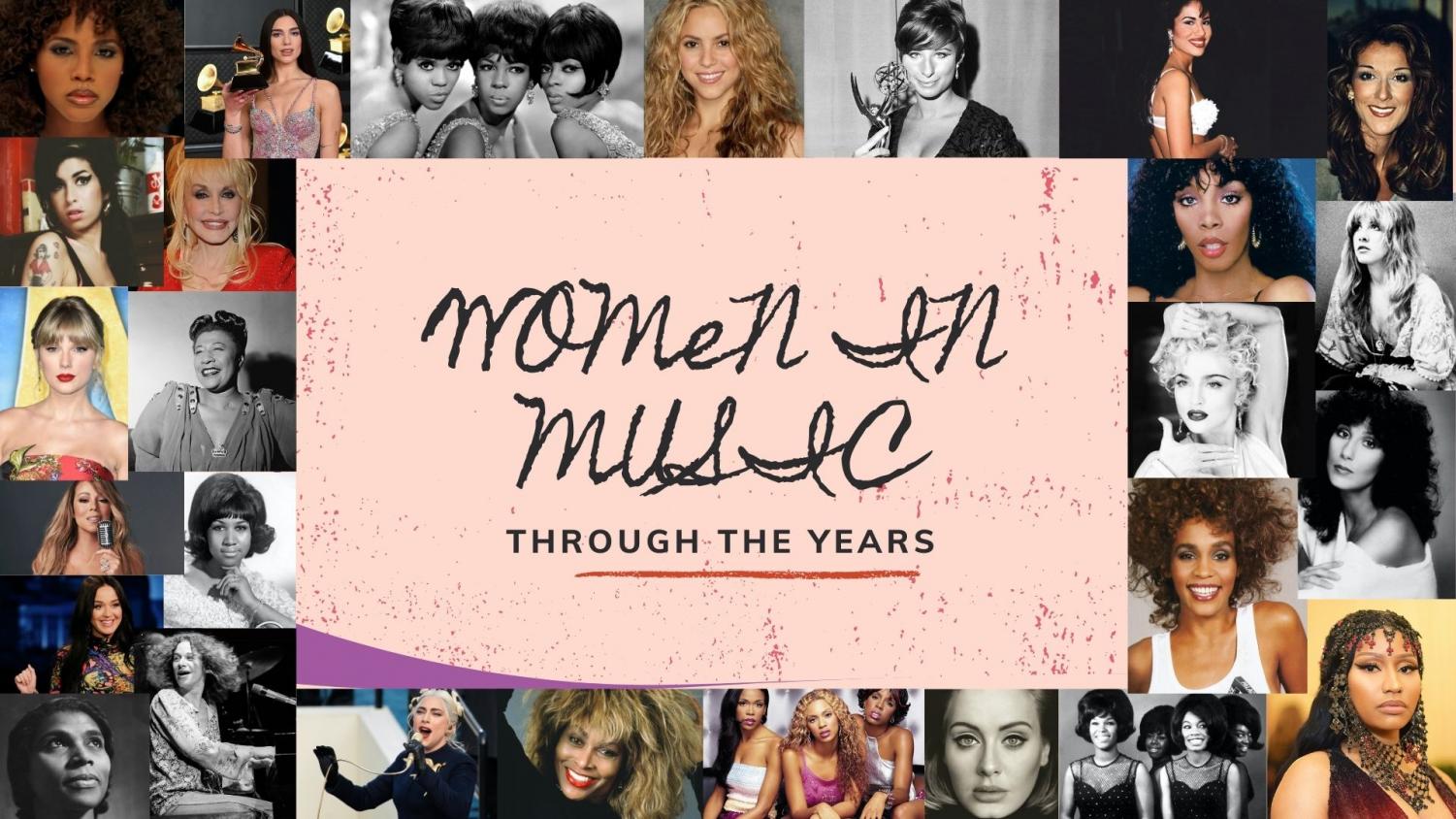
Women have faced adversity in the music industry throughout the years
Women in Music: Women are overcoming adversity, gaining ground, and spreading positivity in the music industry
With so many female voices on the radio, it is easy to forget the gender discrimination and even abuse of women that exists in the music industry and that, up until recently, female artists’ careers were generally run by men. Music has existed for centuries in cultures all over the world, yet women are still breaking barriers and fighting to gain equal rights in this industry.
Careers in music were thought to be only suitable for men up until the 20th century. Before this time, if a woman wanted to indulge a passion for music, she would have to do it as a nun or a music teacher. Even sisters and wives of famous 19th composers did not receive support from their families to become musicians or composers.
In the 1950’s, 60’s and 70’s in America, many popular singers were women. While many had successful careers, they were judged on their appearances, they were backed up by bands made up of men, and they sang songs written by men. With the production of the popular dance hit, The Loco-motion, however, in 1962, Carole King broke new ground by becoming the first woman in popular American music to be credited with composing, arranging and conducting an album. Yet, even after this release, Carole King’s writing partner, her husband Gerry Goffin, continued to receive more compensation and credit for their cowritten songs.
The 70’s:
In the 1970’s, Carole King did, however, break another glass ceiling and pave the way for singer songwriters. Her 1971 album Tapestry, for which she wrote and sang all of the songs, remained on the Billboard 200 chart for 4 years and is ranked on Rolling Stone’s list of the 500 greatest albums of all time. In one song, King sang about being a “natural” woman, as opposed to a female trying to live up to a certain false image. King’s appearance with her natural curly hair and little makeup also helped women not feel obligated to conform to societal expectations.
The same year that Carole King released Tapestry, Carly Simon sang “You’re so Vain,” speaking assertively to a male.
In the 1970’s and 1980’s, several women gained fame as rock singers and songwriters and helped dissolve certain gender biases. Stevie Nicks joined Fleetwood Mac in 1975 and helped produce Rumours, one of the best selling albums of all time. In the 1980’s, more women became prominent lead singers in rock bands. Pat Benatar, Joan Jett, and Debbie Harry as well as Ann and Nancy Wilson, who began as lead singers with Heart in the 1970s and continued through the 1980’s helped evolve society’s images of women. These women were confident, assertive, feisty, and forceful. Annie Lennox also pushed social norms with her androgynous appearance in a suit and tie and short, spiked hair.
The 80’s:
The reemergence of Tina Turner in the mid 1980’s created another female role model who symbolized how far women’s roles in America had come since the 1960’s. In the 1960’s Tina was part of a musical duo with her then husband Ike Turner. Ike demanded complete control over Tina’s career, chose the stage name “Tina” for her, and physically abused her. In the 1980’s, Tina gained popularity as a solo artist. Although in her mid-40’s at the time, her short skirts, leather outfits, and dramatic wigs coupled with her edgy voice made her a music icon.
Typically in the 1980’s, record labels would dictate the style and concept of an album for the performers. Madonna bucked that system by becoming the first woman to have complete control over her music. She also founded her own record label. Throughout her career, she continually transformed her appearance, influencing fashion and always freely expressing her sexuality and fierceness at once. She was independent, making her own artistic decisions that included making music videos that depicting stories with diverse characters including members of the LGBTQ community and also elaborate theatrical concerts with multiple sets and costume changes.
Another female artist, popular during the 80’s as well as before and after the decade, Cher, has also used sexuality to push gender barriers while making clear that women do not have to depend on men. When her mother advised her to marry a rich man, Cher famously said, “Mom, I am a rich man.”
Popular Artists Today:
Today, female artists such as Taylor Swift, Beyoncé, Lady Gaga, Billie Eilish, Dua Lipa, Lizzo, and Demi Lovato are working to push gender norms and trying to dissolve the discrimination that still exists not only in the industry but against women everywhere. Each of these singer songwriters not only maintains an image of independence, not backing down to males who might have attempted to control their careers, but they fight against male abuse and they preach positivity in their song lyrics.
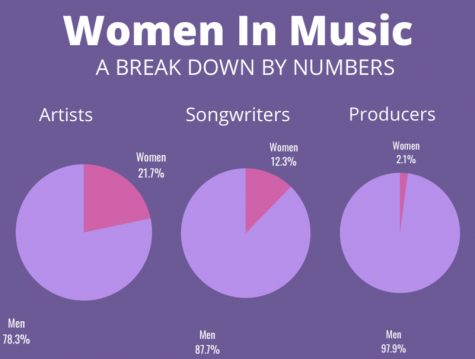
Rather than taking orders from a male advisor as is traditional in the industry, Taylor Swift maintains strict control over her public image and also social media content. She is either the exclusive writer or cowriter on all of her songs. She has succeeded in producing country music, pop, hip-hop, EDM, and folk music. She has stood up for herself and other female artists in the past, having sued a radio DJ who groped her. She also reportedly donated money to pay for female artist Kesha’s legal fees in a case against a male sexual and emotional abuser who was also Kesha’s music producer. Taylor Swift’s song, “The Man” points out that many male behaviors would never be tolerated if a woman acted similarly. Swift’s video demonstrates that society overlooks male self-centered behavior and does not scrutinize men for their appearance.
Beyoncé likewise maintains creative control over her videos and performances. As a member of Destiny’s Child, she sang about strong, independent women and not putting up with men who cheat. She tries to educate the public about feminism and also the Black Lives Matter movement. Beyoncé’s “Black Parade” song and video won the Grammy for the best R & B performance in 2021. In 2011, Beyoncé fired her manager, who was her father. The move proved to be a shrewd business maneuver because her career as soared and she currently holds the record for the most Grammys by a female artist with 28.
Today, many female artists urge women to love their bodies without feeling the need to conform to expectations. Lizzo promotes acceptance of one’s body by wearing tight, revealing outfits and also utilizing plus-size female dancers. Lizzo’s lyrics also celebrate herself unapologetically, feeling comfortable in her own skin. Billie Eilish also promotes independence from gender norms in both her clothes and her music. She utilizes a distinctively soft style of singing and often wears oversized clothes that add to the intense effect as she sings about love, depression, climate, crime among other topics.
Likewise, Dua Lipa emboldens women through the lyrics in “New Rules” and “IDGAF.” The lyrics encourage women to take control of their emotions and decisions and not become dependent on boyfriends, etc. Dua Lipa wears a masculine looking suit in the IDGAF video, expressing strength, independence and rejection of her boyfriend’s behavior.
More female artists are rejecting gender norms and promoting positivity in women. Demi Lovato, for instance, sings “I Love Me,” referring to the fact that she accepts her body regardless of what images she may see in a magazine.
Another notable artist, Lady Gaga, who is a singer-songwriter, record and film producer, director, actress, businesswoman, and philanthropist, promotes LGBTQ acceptance in “Born this Way.” Like many female artists in the music industry, Lady Gaga suffered a sexual assault years ago. Nevertheless, she spreads messages of resilience and self-acceptance. Pointing out that women should not cling to societal perceptions of beauty, she has said, “Whether I’m wearing lots of makeup or no makeup, I’m always the same person inside.”
